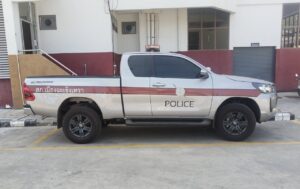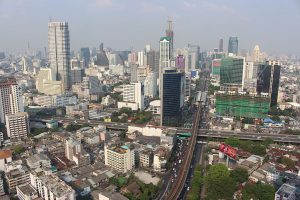Dozens of images captured on Monday showed the terror of 211 passengers and 18 crew members on a flight from London to Singapore that suffered a serious incident due to heavy turbulence. With one 73-year-old man dead and some 30 injured, seven of them hospitalized in critical condition, the Boeing 777-300 ER was rocked by “sudden extreme turbulence” and suffered a sudden loss of altitude, according to FlightRadar data, of almost 6,000 feet (2,000 meters).
Plane From London Makes Emergency Landing in Bangkok, One killed, Many Injured
Faced with the event, the pilot of the aircraft had to declare a medical emergency and land at Suvarnabhumi airport in Bangkok, Thailand, where he arrived at around 15.45 local time after having departed from London’s Heathrow Airport in the evening.
“This type of turbulence causes many injuries,” says an expert European pilot. He also explains that there are two types of turbulence. Convective turbulence, which is detected by weather radars because it is linked to an atmospheric phenomenon (clouds with thunderstorms, for example) and can be predicted, and clear air turbulence, which is not known to exist and is not predicted because it is not associated with clouds containing lightning, thunder or hail. Moreover, they occur at high altitudes. It is the latter that caused the terrible incident on Monday’s flight.
“The clear air turbulence usually occurs in the cruise phase, the time when the aircraft is already at constant altitude and speed, and is the most dangerous, as we are often not forewarned that it is there,” he said. It is this lack of foresight that causes neither the pilot nor the passengers to know what is going to happen, which is why many are already traveling without seat belts. “The seat belt sign is not turned on and the turbulence comes in very fast, which causes a very abrupt variation in altitude, causing people to hit the ceiling,” he added.
An investigation has been launched into what went wrong on a Singapore Airlines from London, after it hit severe turbulence. One person died and multiple people remain in hospital after the plane fell thousands of metres in just minutes. pic.twitter.com/728MlvWTtz
— The Project (@theprojecttv) May 22, 2024
Another expert pilot with around 19,000 hours of flight time under his belt said that “this type of turbulence is not detected by weather radar” and in the case of the London to Singapore flight could be categorized as “extreme,” the maximum severity for such a phenomenon.
He compared “the altitude fluctuation” of which his colleague spoke to “a kind of bump,” so neither of them believes that the loss of altitude of almost 6,000 feet on Monday was due to turbulence and they point to the subsequent investigation to know the details. “The most likely scenario is that the pilot made a controlled descent to reach more stable air,” says the Sepla collaborator, who also stresses that FlightRadar’s results cannot be taken as a reference. “In an accident investigation, the data from these applications are not used because they do not have the necessary specifications to gather everything that is needed,” he explained.
An aviation authority explains that these incidents “usually occur in specific layers of the atmosphere. Those of clear air are usually caused by what is called a shear, which is a variation in the direction and intensity of the wind, and this usually occurs where two air masses converge and at a specific place and altitude. When we have turbulence in cruise, what we do is ask for information about whether there are other aircraft flying in the area at different altitudes and whether they are also experiencing it and to what degree. Based on that we vary the altitude.”
One man has died and multiple people were injured after a Singapore Airlines from London to Singapore encountered severe turbulence, dropping thousands of metres in just minutes.
Teandra Brock was a passenger on the flight and told us what happened. pic.twitter.com/RZntMYgLXm
— The Project (@theprojecttv) May 22, 2024
On the other hand, this pilot, who relies on data from the U.S. National Transportation Safety Board, specifies that climate change is one of the reasons why “clear air turbulence is now more common on flights in the North Atlantic, the Middle East and near South America”. This is also mentioned by a professor of Aerospace Engineering who warned on the same day of the incident that turbulences are worsening, especially in the North Atlantic, due to the climate crisis.
Experts assure that in circumstances such as those that occurred on the flight from London to Singapore, “the plane will never be in serious danger, it will not fall, it will not break, as in the movies”, but passengers may suffer damage from blows, as if they jumped between two and three meters in height if they were not wearing seat belts, or injuries from falling suitcases.
“There is no chance of a plane going down due to turbulence, the certification criteria for the aircraft are incredible, the wings cannot break. Planes are prepared to withstand much, much bigger turbulence and usually have no serious consequences for the aircraft.”
11 Thai Airways passengers and crew members injured from air turbulence
In this situation, experts recommend traveling with seat belts on during the entire flight. “Most of the incidents involving injuries in this type of event are usually due to unplanned turbulence and injuries caused by impact with the ceiling or loose objects in the cabin. With the belt, this is greatly minimized.”
-Thailand News (TN)





















+ There are no comments
Add yours